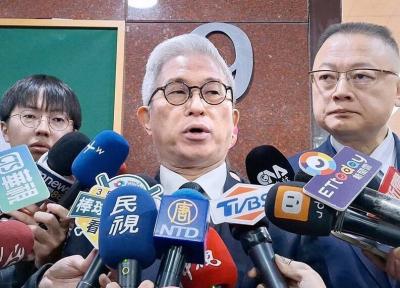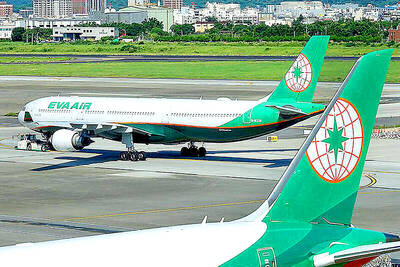The Ministry of National Defense could be contravening a legislative directive if it does not request that the US government perform an open competition bidding process for suppliers involved in upgrading its fleet of 146 F-16A/Bs.
In a meeting on Oct. 12 attended by legislators from the Foreign Affairs and Defense Committee, Minister of National Defense Kao Hua-chu (高華柱) and a representative from the Directorate-General of Budget, Accounting and Statistics, the legislature stipulated that to ensure the proper use of government public resources, the ministry’s Letter of Agreement for the upgrade package for the F-16A/Bs “shall not specify any supplier and shall request the US team to perform open competition.”
Despite this directive, the ministry appears to have only one supplier in mind — Lockheed Martin Corp — and does not seem to have asked the US to facilitate competitive bids for avionics and weapons systems integration.
This comes as Lockheed Martin is locked in competition with BAE Systems over a program for avionics upgrades and weapons systems integration for 135 KF-16C/Ds for the South Korean air force (ROKAF) worth about US$1 billion.
Representatives from the defense industry describe the program for the ROKAF as “almost identical” to that for Taiwan’s F-16s, which will come at an estimated cost of US$5.3 billion. Not included in the US$1 billion price tag for South Korea is the acquisition of active electronically scanned array (AESA) radar, which is part of the upgrade programs for both South Korea and Taiwan.
Lockheed Martin, the maker of the F-16, told Defense News it was unconcerned by the BAE bid and denies the two upgrade plans are identical, adding that the firm has a unique experience in integrating AESA radar.
“We have integrated AESA radars into all of our current fighter programs: the F-16 [Block 60], the F-22 and the F-35,” which gives Lockheed a “baseline knowledge of the aircraft and the experience to ensure that the job is done right and within the cost and schedule that our customer demands,” a Lockheed official told Defense News.
The AN/APG-80 AESA radar used on the F-16 Block 60, also known as the F-16E/F Fighting Falcon, differs from the types proposed for Taiwan’s F-16s — Raytheon Corp’s Raytheon Advanced Combat Radar (RACR) or Northrop Grumman Corp’s Scalable Agile Beam Radar (SABR).
At the heart of the systems integration is the operational flight program, of which two are currently in service in the US Air Force (USAF): Lockheed’s M-Tape, which uses a modular mission computer built by Raytheon using Lockheed software, and BAE’s SCU-Tape, which uses BAE’s fire control computer.
The SCU-Tape, which relies on Ethernet connectivity for the fire control system, passed full USAF operational tests and evaluation in April last year and has been installed on about 270 F-16s in the USAF, BAE says.
The company says Ethernet connectivity is faster and the future for all the traffic involved in on-flight systems.
Lockheed is believed to have offered an Ethernet alternative for the Taiwanese air force, although this would likely involve additional development costs and delivery delays for Taiwan.
BAE Systems International Taiwan president Ralf Persson told the Taipei Times yesterday that the key point is that Taiwan stands to benefit from an open competition bid for systems integration and that regardless of who won the bid, having more than one provider compete for the contract would bring down prices and maximize the value of the investment.
However, he said Taiwan’s air force did not appear to fully comprehend the benefits of doing so, despite lobbying by BAE.
Although BAE has yet to perform AESA integration, Persson said the company was capable of doing so, regardless of which model is selected by Taiwan.
Despite the close institutional ties between the USAF, Taiwan’s air force and Lockheed Martin, BAE was confident it could accomplish systems integration for the upgrade package, pointing to other instances where it did so on airframes it had not designed, such as Boeing’s F-18s used by the Royal Australian Air Force.
Asked for comment, ministry spokesperson David Lo (羅紹和) said the upgrade was “a done deal” and that the military would not comment on whether the European firm is interested in or capable of upgrading Taiwan’s F-16A/Bs.
BAE Systems is the US segment of UK-based BAE Systems PLC.
Lo said F-16A/Bs are a product of Lockheed and should therefore be upgraded by their original maker, Lockheed, “because the company has secrets and owns the technology for the combat aircraft.”
South Korea is expected to announce its decision in the first or second quarter of next year.
Additional reporting by Rich Chang

A strong continental cold air mass is to bring pollutants to Taiwan from tomorrow, the Ministry of Environment said today, as it issued an “orange” air quality alert for most of the country. All of Taiwan except for Hualien and Taitung counties is to be under an “orange” air quality alert tomorrow, indicating air quality that is unhealthy for sensitive groups. In China, areas from Shandong to Shanghai have been enveloped in haze since Saturday, the ministry said in a news release. Yesterday, hourly concentrations of PM2.5 in these areas ranged from 65 to 160 micrograms per cubic meter (mg/m³), and pollutants were

Taiwan’s armed forces have established response protocols for a wide range of sudden contingencies, including the “Wan Chun Plan” to protect the head of state, the Ministry of Defense (MND) said today. After US President Donald Trump on Saturday launched a series of airstrikes in Venezuela and kidnapped Venezuelan President Nicolas Maduro, concerns have been raised as to whether China would launch a similar “decapitation strike” on Taiwan. The armed forces regularly coordinate with relevant agencies and practice drills to ensure preparedness for a wide range of scenarios, Vice Minister of National Defense Hsu Szu-chien (徐斯儉) told reporters before a

EVA Airways on Saturday said that it had suspended a pilot and opened an investigation after he allegedly lost his temper and punched the first officer several times as their plane was taxiing before takeoff at Los Angeles International Airport. According to a report published on Thursday by The Reporter, the incident occurred after the flight’s Malaysian first officer tried to warn the Taiwanese pilot, surnamed Wen (文), that he was taxiing faster than the speed limit of 30 knots (55.6kph). After alerting the pilot several times without response, the first officer manually applied the brakes in accordance with standard operating

The New Taipei City Social Welfare Department on Thursday celebrated Paralympic competitor Chen Tzu-wei (張孜維), who received last year’s national Golden Eagle award for exemplary achievement by Taiwanese with disabilities. Chen, who suffers from childhood-onset muscular dystrophy, did not attend the first award ceremony held by the Ministry of Health and Welfare in November due to illness. Chen was formally presented with the award at the department, where he gave thanks to government workers for supporting his education and livelihood, the department said in a statement. Chen was raised by the Ai-hsin Home for Persons with Disabilities in the city’s Bali District (八里)